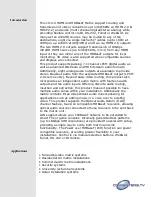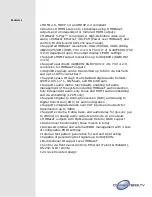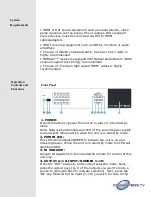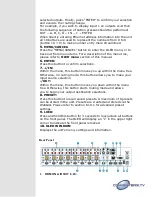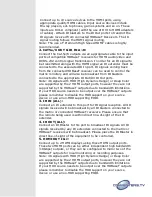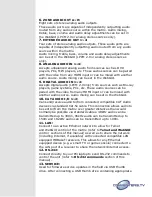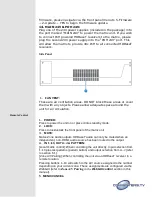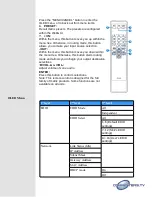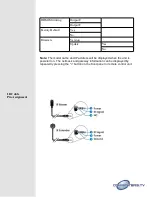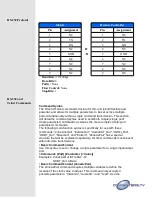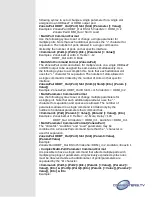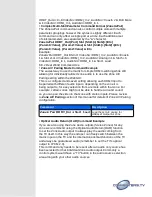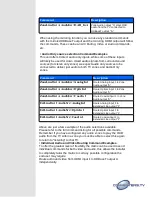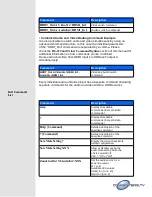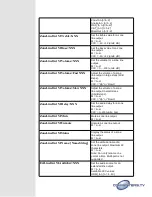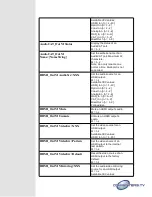
6.
ZONE AUDIO OUT A~H:
Eight sets of stereo analog audio outputs.
These audio ports are capable of independently outputting audio
routed from any audio source within the matrix. Audio mixing,
treble, bass, volume and audio delay adjustments can be set in
the WebGUI (LPCM 2.0 or analog stereo sources only).
7.
EXTENDED AUDIO OUT 1~4:
Four sets of stereo analog audio outputs. These audio ports are
capable of independently outputting audio routed from any audio
source within the matrix.
Audio mixing, treble, bass, volume and audio delay adjustments
can be set in the WebGUI (LPCM 2.0 or analog stereo sources
only).
8.
ANALOG AUDIO IN 1~4:
Accepts unbalanced analog audio from sources such as DVD
players, PCs, MP3 players, etc. These audio sources can be paired
with the video from any HDMI input or can be mixed with another
audio source. Audio mixing can be set in the WebGUI.
9.
DIGITAL AUDIO IN 1~4:
Accepts digital audio (LPCM 2.0 only) from sources such as Blu-ray
players, game systems, PCs, etc. These audio sources can be
paired with the video from any HDMI input or can be mixed with
another audio source. Audio mixing can be set in the WebGUI.
10.
CAT AUDIO I/O 1~2:
Can send/receive audio to/from connected compatible CAT Audio
devices via standard Cat.5e cable. This connection allows audio to
be sent to/from the matrix over greater distances than would
normally be possible via standard cables. 48kHz audio can be
transmitted up to 300m, 96kHz audio can be transmitted up to
150m and 192kHz audio can be transmitted up to 100m.
11.
LAN:
Connect to an active Ethernet network to allow for Telnet
and WebGUI control of the matrix (refer to
Telnet and WebGUI
control sections of this manual) as well as to share the network
(including Internet, if available) with connected compatible LAN
equipped HDBaseT receivers. This allows for any Ethernet
equipped device (e.g. a smart TV or game console) connected to
the LAN port of a receiver to share the network/Internet access.
12.
RS-232:
Connect directly to your PC/laptop to send RS-232 commands to
control the unit (refer to
RS-232 commands
section of this
manual).
13.
SERVICE:
Used for firmware service updates in the field via USB thumb
drive. After connecting a USB thumb drive containing appropriate


